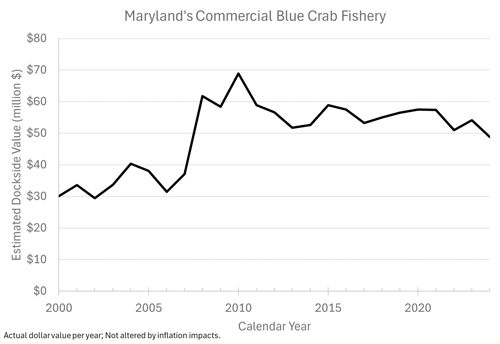Commercial Blue Crab Landings
Main_Content
 This webpage is updated annually. The last update was 6/2/2025. Data could change in the future as additional harvest reports are submitted to the department. The data shown below could vary from data downloaded from the Atlantic Coastal Cooperative Statistic Program due to differences in confidential rules.
This webpage is updated annually. The last update was 6/2/2025. Data could change in the future as additional harvest reports are submitted to the department. The data shown below could vary from data downloaded from the Atlantic Coastal Cooperative Statistic Program due to differences in confidential rules.
To commercially harvest blue crabs, individuals are required to be licensed through the department. There are different types of commercial crab harvest licenses::
- Unlimited Tidal Fish (TFL) - Comprehensive commercial fishing license allowing for the harvest of multiple fish species, including crabs. The maximum number of TFL is 2,064.
- Limited Crab Harvester Male Only (LCM) - Allows the use of up to 50 crab pots, trotlines, nets, dip nets, traps, pounds, and scrapes to harvest male blue crabs only for sale. The maximum number of LCM is 461.
- Limited Crab Harvester 50 pots (LCC) - Allows the use of up to 50 crab pots, trotlines, nets, dip nets, traps, pounds, and scrapes to harvest blue crabs for sale. The maximum number of LCC is 2,598.
- Crab Harvester 300 pots (CB3) - Allows for the use of up to 300 crab pots to harvest blue crabs. The maximum number of CB3 is 298.
- Crab Harvester 600 pots (CB6) - This is a supplement authorization when an individual already has either a TFL or a CB3 providing for the use of up to 600 crab pots to harvest blue crabs. The maximum number of CB6 is 220.
- Crab Harvester 900 pots (CB9) - This is a supplement authorization when an individual already has either a TFL or a CB3 providing for the use of up to 900 crab pots to harvest blue crabs. The maximum number of CB9 is 392.
The maximum number of licenses is shown in regulation COMAR
08.02.01.05.
Since 1996, commercially licensed blue crab harvesters have been required to submit crab harvest reports. These reports inform the department on daily commercial blue crab harvest. The harvest reports also provide information on the month of harvest, location of harvest, gear type used to harvest, and the type of crab harvested.
Estimated total harvest is calculated using reported commercial harvest data (as submitted by licensed harvesters) and the reporting compliance rate to estimate harvest not reported. In 2024, the reporting compliance rate monthly average was 69%.
Commercial Blue Crab Landing Data 2000-2024
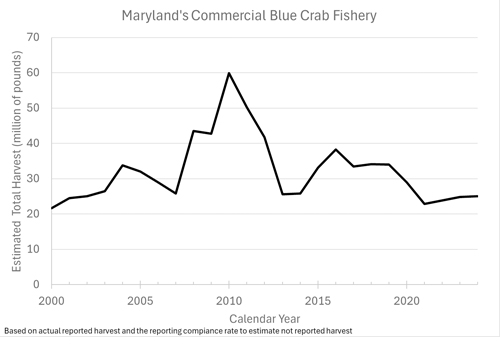
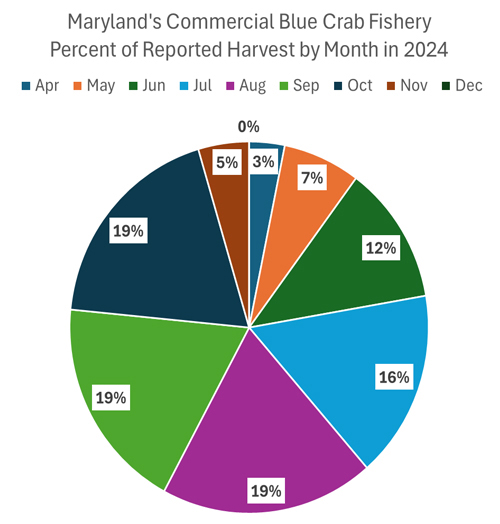
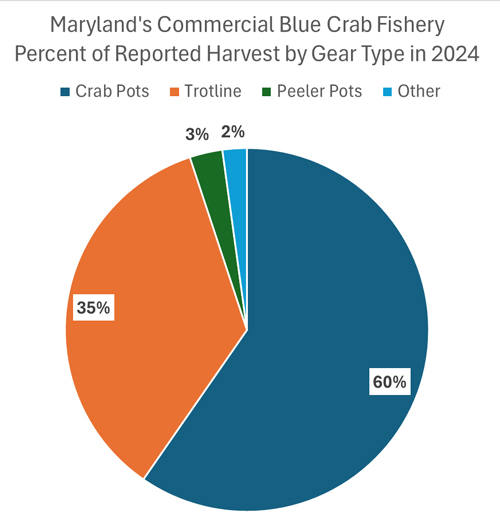
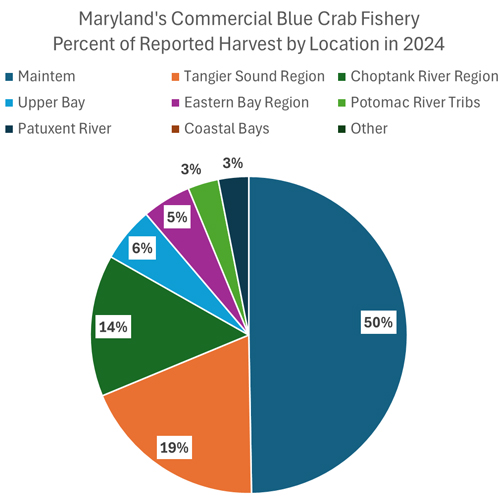
Blue crabs are broken into different market categories that are defined as:
- Hard Shelled Crabs -
- #1 Males - Male blue crabs with hard shells that are the larger, heavier crabs, typically over 5.5 inches
- #2 Males - Male blue crabs with hard shells that are smaller and typically measure below 5.5 inches
- Female - Female blue crabs with hard shells
- Cull (Mixed) - Male and female blue crabs with hard shells that have not been separated into different size classes (lesser quality)
- Soft Crabs - Blue crabs that have recently shed their outer hard shells and are in the process of growing a new one.
- Peelers - Blue crabs that are in the process of molting its shell.
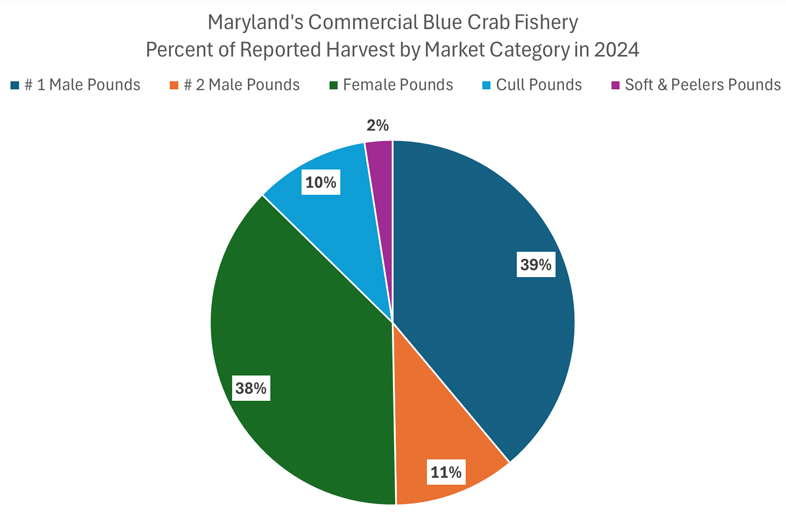
Dockside value represents the value of the harvest when it is landed to the harvester (excludes value added from restaurants, shipping, picking houses, festivals, etc.) Estimated dockside value can be calculated using the estimated total harvest and price per pound information supplied by seafood dealers.
